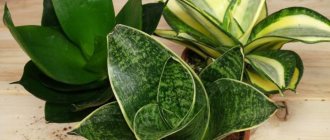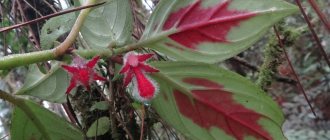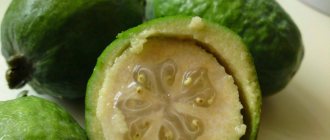Zantedeschia: plant features
Each flower has its own characteristics and care requirements, and Zantedeschia is no exception. Its main feature is that it can be grown in the garden, or at home. But no matter what growing method you choose, you need to remember a few rules for caring for the plant:
- To prevent the roots from rotting, they only need to be lightly sprinkled with soil and not deepened;
- Few people know that what we are accustomed to thinking of as a calla flower is actually not one. This is just a leaf that protects the flower from mechanical damage. Calla flowers are very small, although they have an incredibly strong and pleasant aroma;
- calla germinates for a very long time, because first it completely forms its root system, and only then shoots appear. This may take up to 30 days;
- if you decide to replant a flower, then use extreme caution when digging up the tubers as they are very easy to damage;
- If you notice small droplets at the tips of the leaves, then be prepared for the fact that it will rain soon. Before the rain, the flower always looks as if drops have already fallen on it. This applies to both garden and indoor Zantedeschia;
- pay special attention to choosing a pot for calla lilies. It is better if it is a porous pot, which will allow excess moisture to quickly evaporate. This point is especially important if you decide to grow Ethiopian calla lilies;
- The flowering period of each Zantedeschia flower is 30 days;
- Periodically it is necessary to replace the top layer of soil in the pot with fresh one.
If you follow all these simple rules, you will be able to grow a healthy and beautiful flower in your garden.
Indoor plant species and varieties with photos and names
Today, the Araceae family includes no more than a dozen species, but all of them are ornamental plants.
White Ethiopian
Ethiopian or rhizomatous (lat. Zantedeschia aethiopica) - this species can very often be found in winter gardens and greenhouses. Its shiny arrow-shaped leaf plates are dark green, the petioles reach 60 cm in length, and the erect peduncle is shrouded in a large white blanket.
Pink Remana
Calla rehmannii (lat. Calla rehmannii) is a very compact indoor plant, the height of which does not exceed 70 cm.
Its characteristic feature is purple, pink or red covers around the flower stalks. This type of calla lily has very large leaves with a speckled color.
Elliot's Yellows
The Elliot variety (lat. Calla elliottiana) is a light-loving species of Zantedeschia, which is characterized by abundant flowering. During this period, the plant is covered with yellow buds, as well as wide blankets of a similar shade. The leaves are heart-shaped, green in color with white splashes. Height up to 50 cm.
Picasso
Calla Picasso (lat. Calla Picasso) is an amazingly beautiful variety with an unusual color of the bedspread. The height of the plant reaches 45 cm, the diameter of the covering glass is about 8 cm, its height is 15 cm, the color is purple-violet with a lighter edging.
The Snow Queen
The Snow Queen (lat. Calla Frozen queen) is a plant with snow-white, almost transparent, and slightly greenish leaves at the edges.
Against this background, the flowers stand out extraordinarily effectively, the bracts having a deep pink hue. Plant height up to 40 cm.
Vermeer
Vermeer (lat. Calla elliottiana Vermeer) – the color of the bedspread of this type of calla is white on the outer edge and purple-burgundy on the inside. Against this background, the lemon cob buds stand out. The leaves of the species have white spots. Height up to 70 cm.
Mango
Calla Mango (lat. Calla Lily, Zantedeschia Mango) is one of the most profusely flowering members of the family.
At the beginning of the process, the bedspread becomes a yellow-orange hue, but after a week the color turns to orange-red. The leaves are large, heart-shaped, fleshy. The height of an adult plant is 35 cm.
Beautiful black or burgundy
Black callas fascinate and delight with their appearance. The height of this plant is usually about 100 cm. Its long, sharp, dark green leaves have small silvery inclusions.
In fact, the deep, rich color of the bedspread turns into a deep purple or maroon shade upon closer inspection.
The most common representatives:
- Calla Black Crusader;
- Black Pearl (Calla Black Pearl);
- Naomi Campbell (Calla Naomi Campbell);
- Black Star (Calla Black Star).
Red Red Alert
Calla Red Alert (lat. Calla Red Alert) - has bright red flowers and green leaves with white splashes. The diameter of the bedspread is up to 10 cm, the height of the glass is up to 12 cm. An adult plant reaches 50 cm in height.
Captain Safari
Captain Safari (lat. Zantedeschia Captain Safari) is a perennial herbaceous plant, the height of which reaches 50-80 cm. The leaves of the species are elongated, green with white splashes. Yellow-orange candle-shaped flowers.
Garnet Glow
Calla Garnet Glou (lat. Calla Garnet Glou) - a tuberous variety, the leaf blades are large, waxy, arrow-shaped, shiny. The inflorescence is solitary, the spadix is creamy-yellow, framed by a slightly wavy spathe. The color can be carmine, pink, white or purple. Plant height up to 60 cm.
Gallery: calla lilies (25 photos)
Growing in the garden
Many gardeners enjoy planting Zantedeschias in their gardens. Their flower stalks add majesty to every garden. And since the plant is a perennial, the rhizomes produce new shoots every year.
Callas prefer open space in fertile soil. But if the summer is too hot, the flowers should be shaded. This is due to the fact that the scorching sun is extremely dangerous for their delicate leaves and peduncles. It literally burns them.
Choose places for planting these flowers so that there are trees nearby, the shadow of which will fall on the flower bed with callas in the afternoon. When choosing soil, make sure that it is fairly acidic. Rhizomes do not like stagnant moisture, so you should prepare good drainage for them in advance. You can prepare the soil for calla lilies yourself. To do this you will need:
- sand;
- Earth;
- peat;
- leaf humus.
All these components must be taken in equal proportions. Mix and form a flower bed.
Additional symptoms
Stool discoloration may be accompanied by:
- pain in the abdomen and right hypochondrium;
- high temperature;
- yellowing of the skin and eye sclera;
- nausea and vomiting;
- bloating;
- constipation or diarrhea;
- darkening of urine;
- deterioration of appetite and gradual decrease in body weight.
If the discoloration of stool is accompanied by an increase in temperature, pain in the right side and darkening of the urine, then, most likely, cholecystitis or hepatitis has developed or the bile ducts are blocked.
If the stool becomes discolored only periodically and emits a foul odor combined with a liquid consistency, then the digestion of fats is impaired in the body. This situation may be a consequence of pancreatitis, cholelithiasis, celiac disease, pancreatic or gallbladder cancer.
White lumps, fibers, or grains in regular-colored stool indicate undigested plant particles. There is no need for treatment: the digestion process normalizes after a few days.
Planting and care
The most suitable time for planting calla lilies is considered to be the beginning of May. Before planting, you need to prepare the soil and drainage in advance, and then prepare the tubers. They are kept for half an hour in a solution of potassium permanganate. If there are rotten places on the tubers, you should carefully remove them with a knife. The resulting wounds must be covered with brilliant green so that the damage does not begin to spread further.
Buy complex fertilizer and apply it to the soil at the rate of 30-40 grams per square meter. Then the fertilized area should be dug up and the holes prepared. Tubers are placed at a distance of 30-40 centimeters from each other and to a depth of no more than ten centimeters.
White callas at home
If you decide to grow calla lilies at home, then you need to take care in advance of the place where the flower will grow. This should be a well-lit place, but without direct sunlight. The temperature in the room in summer should be from 22 to 25 degrees, and in winter it should not fall below 14 degrees.
The soil for home calla lilies should be quite acidic and nutritious; it’s good if you add peat and sawdust to it. Select a pot approximately 25 centimeters in diameter. The tuber should be quite large. With the convex side it is placed in a pot 5 centimeters into the soil. When the tuber is covered with soil, it is necessary to water it with fungicide on top.
Homemade calla lilies, like garden ones, do not require special care. She also does not like excess moisture. Too much water can cause the tuber to rot.
How do you know what color stool should be?
The color of stool in an adult depends on many factors, both physiological and pathological.
There are external reasons:
- general human nutrition;
- vegetarianism or meat-eating;
- alcohol consumption;
- taking medications.
There are also internal reasons:
- production of stercobilin and bilirubin;
- abnormal structure of the gallbladder;
- disruption of the liver and pancreas;
- blockage of the bile ducts;
- dysbacteriosis;
- congenital diseases (cystic fibrosis);
- acquired diseases (diabetes mellitus, diverticulosis, hepatitis, liver cirrhosis, pancreatitis and others).
With a normal diet, the color of human stool varies from dark brown to light brown.
And people who consume dairy products excessively may have pale yellow stool.
The greenish color of the stool is typical for those who consume a lot of sorrel, but for people who eat mostly meat products (especially pork), the stool will turn black-brown.
Flower propagation
There are three ways to propagate calla lilies:
- seeds (unreliable method);
- tubers;
- dividing the bush.
If you decide to propagate callas by dividing the bush, then in the fall, when you dig up the bushes, the offspring, along with the rhizome, are separated from the general bush and placed in a special pot with soil. In the spring, this seedling is transplanted into open ground. But this method of reproduction is only suitable for Ethiopian calla lilies and its subspecies. All other types of calla lilies reproduce by tubers. To do this, in the fall, after flowering, the tubers are dug up and placed in a dry place until spring.











